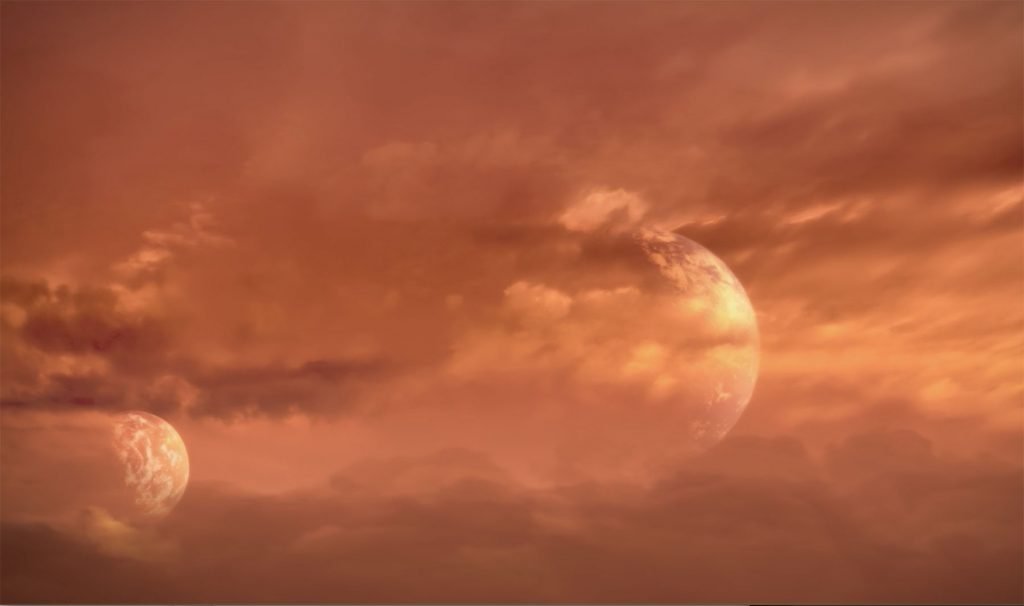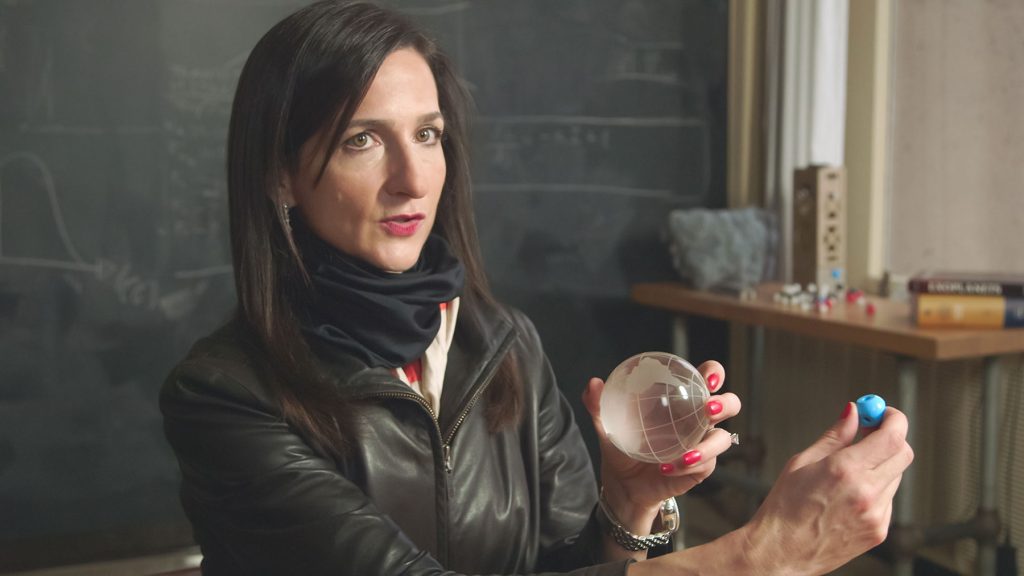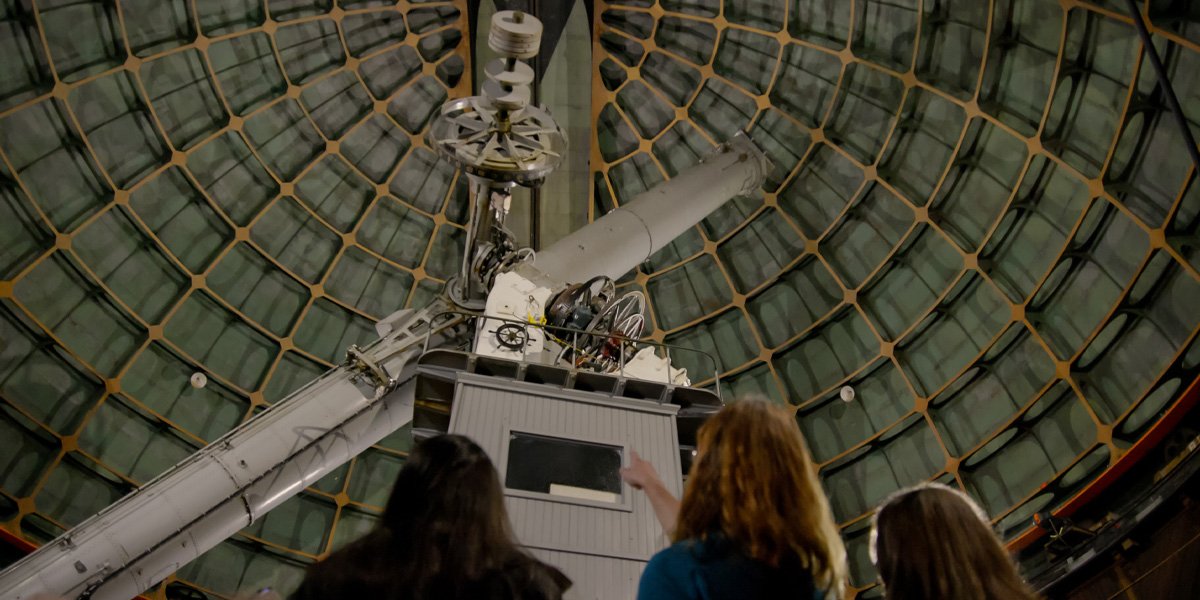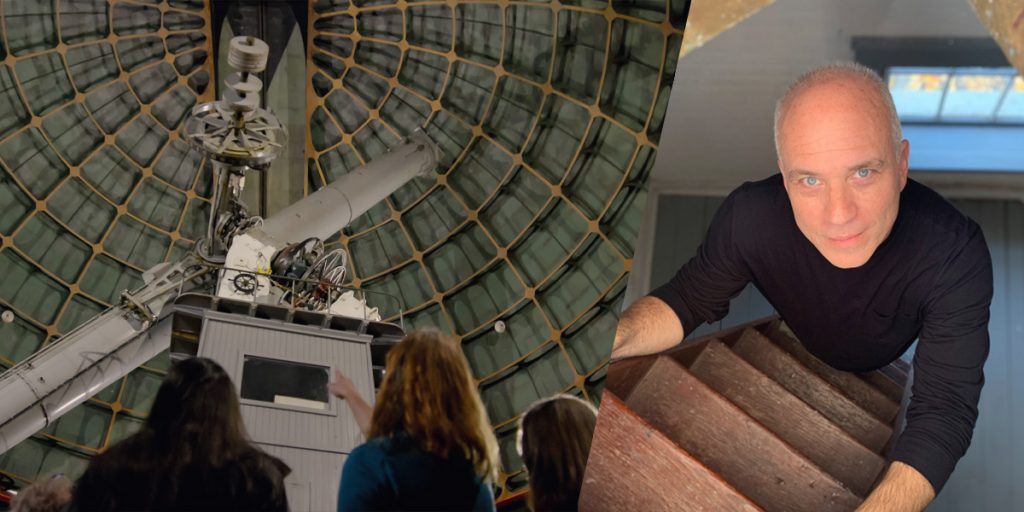Director Nathaniel Kahn discusses the grandiose and intimate The Hunt for Planet B: a story of the scientists, and people, building the next era of space telescope.
I had the chance to speak with two-time Academy Award nominee, director Nathaniel Kahn, to discuss The Hunt for Planet B. In the big picture, the film is focused on the development and construction of the James Webb Space Telescope, a telescope approximately 100 times more powerful than the Hubble Telescope. In telling the story of the telescope, The Hunt for Planet B focuses in on the lives of the mostly female scientists responsible not just for its construction, but its very conception. Kahn is both knowledgeable and passionate about the subject matter, and it was a great joy to have the chance to speak with him about the film’s construction.
Nathaniel Kahn’s Interest in the Cosmos
What’s your background in term of space? Where did your interest come from in NASA, in the stars?
Nathaniel Kahn: I was captivated by the stars and by the universe as a little kid. I was shown by our next door neighbor, who had an old brass telescope that had been bought for him by his grandfather in 1910 to look at Haley’s Comet when it blazed through the sky. As a little boy, this neighbor – he was an ophthalmologist – used to take out this telescope. One night, he had it out and he showed me the moon – it was the first quarter moon, and you could see all the craters. Peering through that just blew my mind. And it’s a story [of first discovery], like one of the people tells in the film, [seeing another world through a telescope] is one of these spark moments where you see something that just blows you away. That’s another world that really exists there, and there are these huge craters on it, and it has this strange light!
When I was also still a little kid, I got to see the astronauts walking on the moon. The moon walk happened when I was in pajamas, as a little kid. It’s one of those things that makes you say, “Oh my god! That’s real! This isn’t science fiction, it’s real!”
I used to build little telescopes when I was in high school. I became completely fascinated with astronomy and space. I got to meet Matt Mountain, who is in this film and was then the head of the Space Telescope Science Institute, and is now head of AURA, which oversees a lot of our telescopes in the world and the space telescopes. Of course, I was fascinated by Hubble, but then he told me about this new telescope, the James Webb Space Telescope, that had then already been awhile in development. I said, “Boy, would I like to film that!”
It’s one of these great projects, like building a cathedral, that takes many generations. I’ve been filming the building of Webb for a while. It’s something that, as a documentary filmmaker, is such a privilege: to be able to watch something unfolding through time. When you get to see something, not only like a telescope coming together, but also the people involved with it and how they change, and how they have to keep sticking with something even when it’s taking forever. All these qualities that we really come to admire about these huge projects, and NASA projects certainly top the list, that take many generations to fully realize. I’ve been fascinated by space for a long time, and then to be able to make this about a telescope as grand and amazing, as aspirational and inspirational as Webb is just a dream come true. It puts together my love of astronomy and my profession of documentary filmmaking.

Nathaniel Kahn on editing a story told over many years
How did the editing process work? You’ve been working on this for so long, and in execution it comes out as such a character driven story. I’d love to hear how it all pieced together for you.
NK: The editor I work with is named Sabine Krayenbühl. We’ve done three films together: My Architect, The Price of Everything, and now this. She also does her own films. We have a shorthand, but it’s also a longhand because these films take a long time to put together. I’m interested in making films that are character driven, and that are composed really of scenes rather than interviews. A strict interview is very difficult for me: I don’t like the idea of sitting down and having conversations that seem very artificial at times.
I know the feeling!
NK: [Laughs] There’s nothing more wonderful than actually interacting with somebody when they’re engaged in doing something, even something as simple as driving a car. When it’s building a telescope or setting up a telescope or, in the case of The Price of Everything, making a piece of art, suddenly people are talking and doing, and it becomes a visual thing.
Sabine and I look for scenes. We look for things which have their own integrity as a little dramatic capsule, and we’ll edit those things first. You’re not even sure how all these things are going to go together. You have a basic concept of where you want to go, and the pieces start to talk to each other. You’re trying to find the story, but even more than the story, you’re trying to find the emotional resonances between these scenes. It would be a nightmare for me to film these scenes and then say, “It’s time to make the film!”. We start to put these things together, and then I go out and film new things based on what we’re discovering. The story is really growing organically along the way. In this case, of course, we had the timeline of building the telescope that helped to be the string on which these pearls could be threaded.
It’s looking for the scenes, and then how they talk to each other from there. Sometimes things will happen, like the climate marches during the period of making the film, that resonate in a way that I did not expect at all. One of the things I think is so wonderful about documentary filmmaking is that it’s unpredictable. The documentary films I most admire are films where you really don’t know what’s going to happen next, many times because the filmmaker didn’t know what was going to happen next! That’s a great joy, and I think sometimes, in narrative filmmaking, you know where it’s going to go. I like the films that really surprise me.
Nathaniel Kahn on the fascinating female scientists of Planet B
I thought Amy Lo was fascinating. You talk about finding organic ways to talk with people – I’m curious about your relationship with her, because I thought it was so interesting how you introduce her digging in on a car for her amateur racing career on the side. She was one of the most interesting people you focused on in the filming.
NK: Amy is amazing. I wanted to make a science film that didn’t feel like a science film. I think that the key for that is getting to know the people. With Amy, we were just talking in her office, and she was showing me this wonderful LEGO model. It was fun in itself that she was using LEGO to make a model of the Webb telescope, and that’s actually helpful! How wonderful is that? We started talking and I said, “Well, what else do you do?” And she said, “Oh… Well, I race cars!” I said, “That’s what we want to film!”
There’s a wonderful contrast between the extreme precision of the James Webb Space Telescope, which has to be right the first time – no mistakes can be made, no room for errors, and you’re never actually touching it – compared to these junker cars that Amy and her husband put together and then race. Literally, they buy a car for $500 or less, a total junker, they fix it up. They had an old Lotus they got on CraigsList for $500 and then they race it on these 24 hour races. That’s a movie in and of itself. I’m not even doing it justice with the little scene that we had, but at least it shows this incredibly fun, human side of this brilliant engineer, who is able to do math in her head that I can’t even dream of!
I’m not sure I could do with a calculator!
NK: [Laughs] Me either! I wouldn’t even know how to think about it. So that contrast in a character driven film, just getting to know someone a little bit. There are so many characters in this film, so unfortunately I couldn’t always dig in as deeply as I’d like to with all the characters, but at least you get a taste for what an interesting and unusual person she is.
One of the other women who really resonated for me, I’d actually heard of her before the film, is Jill Tarter.
NK: The woman from Contact! A great film!
I was curious about how you built a relationship with her, and what it was like just to sit with her. I found her philosophy of the world and the way she described things, how she brings things together, so interesting. I imagine it must have been fascinating to pick her mind.
NK: It was amazing. Jill is one of the most direct people I’ve ever met. It’s a little scary to me, she’s so direct. So I asked her a question, and she said “Nathaniel, what I think doesn’t matter! We’re doing science here! That’s what we find out!” She’s so direct and immediately breaks that fourth wall. I love to find a moment in a film where somebody turns it right around on you and kind of breaks this idea that the documentary filmmaker is this interviewer coming in totally inert. I love that moment where she throws it right back at me.
Talking to her was really remarkable, because she’s a person who has gone through so many different chapters in her life. In the beginning, something like SETI, as she says in the film, was a rather fringe-y organization, this idea of listening for extraterrestrial signals. She is somebody who has worked that long and that hard, breaking the glass ceiling in these areas where people would say “What’s a nice girl like you doing in this field?”, which is ridiculous, but those are the things that she was up against!
To be able to see that, and to see these incredible astronomers – there are many women in the field, especially in exoplanets, and she was really the pioneer. Being able to be with the pioneer and talk to her about these questions was very moving. It was also humbling, in the sense that you recognize that one of the qualities a scientist like that has to have is that you may not find out in your own lifetime the answers to the questions that you are obsessed by. That is something that gives you this hope for humanity that, if people can begin to think more that way, we really do have an obligation to leave this world better than the way we found it. That’s something we should be really aspiring to: the idea that we’re willing to do things that we ourselves may not fully be able to reap the benefits of, that it’s part of what we do as human beings: we do things that are hard and difficult and take many generations to achieve. Talking to Jill constantly made me think that science is this overarching human project that’s reaching out into the dark to try to understand who we are, where we came from, where we’re going, and, certainly, in the case of Jill, one of the greatest questions we’ve ever asked: are we alone?
I’m sure as a young scientist she thought, “We’re going to find life! We’re going to find it!” Yet, we still don’t know. But we are getting closer. That’s the thing about James Webb – it really is a game changer, building a deployable telescope in space. If we have the will to do it, we can build larger and larger instruments now. We know how to do it. This is the first one like that. It’s an incredible machine. In talking to Jill, I felt like I was somehow inhabiting the present, and also touching powerful deep history.

The other woman I really wanted to ask you about is Sarah Seager. Her personal story is sort of the beating heart of the film and I found how it all came together very moving, and I’d love to hear you speak to how you found that side of her and how it all developed.
NK: Without giving too much away, because I hope the audience will be surprised, and I hope you were…
I was!
NK: Good! We certainly can let people know that there is, within this story, sort of a wonderful human connection that takes place. I didn’t know that that was going to happen when I first met Sarah and we started talking. That was something that really unfolded during the making of the film. One of the wonderful things about being a documentary filmmaker is that the lives of the people you work with evolve! Things change! You’re able to somehow capture a little bit of what it is to be a human being: we live, and time goes on, and things change, heartbreak can turn to love. There are second chances!
I didn’t know where the film was going to go, but that human story – and there are several human stories in this film – and the idea that ultimately, as much as this a film that deals with science and big questions, in the end it’s about human beings and human loneliness. We have this desire to connect, one way or another. This idea that we reach out into the dark because of questions, but also because on some level, human beings are lonely. There’s a loneliness to us that leads us to seek each other. We seek answers and we reach out into the dark. Sarah’s story seemed like it just fit so beautifully into that.
Nathaniel Kahn on sequels
What’s next for you? Do you have anything you’re working on now you can share?
NK: Yes. I have a feature project I’m very excited about that’s set in the past that I’m really raring to go on. I really would love to follow this story for part two. I really want to see what happens and I want to see what we find! I feel very invested in this. I’m just going along for the ride, but I hope this is something we all feel we’re going along on the ride for, so I’d love to make a part two!
I’ll certainly be there to watch The Discovery of Planet B in part two!
NK: [Laughs] Hey, what’s out there with Planet B! You know, the Trappist system, just being able to find out more about those incredible seven planets that are really there! You go out at night and you look up at the stars: even fifteen years ago, we didn’t know there were other planets orbiting those stars. Now we know that every single star in the sky is likely to have at least one planet, if not multiple planets around it. That’s totally transformational. And to think that’s in our time, that’s really something.
How Nathaniel Kahn and his team designed alien worlds
How did you come up with the visuals for the Trappist planets? I thought the visuals, the red-scale at the beginning popped so vibrantly, I was curious what informed that design and how you came up with that.
NK: I’m thrilled you asked that! It’s based on the discoveries of the Trappist System and the proximity of the planets. We tried to be as real as we could, but, of course, we don’t know what those planets really look like. We do know that the star around which those planets are orbiting is much cooler than our star so it’s redder. If those planets do have an atmosphere – we don’t know at this point, but if they do – and if they have clouds, there would be this incredible red glow around them. So we started with that, and then thought about the proximity of them. Jet Propulsion Laboratory (JPL) has made this beautiful poster, which also occurs in the film, of the Trappist System. It really inspired us, in the sense that, if you look up on one of the Trappist planets, you would see these planets in the sky bigger than the moon and in multiples.
Remember from Star Wars, and the multiple suns of Tatooine? These would be multiple planets in the sky. If you were there, you’d have no question that there’s another world right there, touchable, almost. So we went with those facts and I worked with a wonderful visual effects artist, Michael Wharton, who helped us realize what those would be like. One thing we didn’t want to do was to give them to you too easily, because we don’t know what they’re like. They’re mysterious. You see them through clouds, and never quite know what they are, so we didn’t want to over-suggest. We wanted to work on the imagination because we don’t yet know what they’re like. Suggesting what they might be like hopefully inspires – and it sounds like it inspired in you! – this sort of mysterious question that’s out there. It was a combination of things that allowed us to visualize those worlds.
This interview has been edited for length and clarity.
The Hunt for Planet B premiered at the South by Southwest Film Festival on March 18, 2021 and is now available to watch on digital and on demand. Read our review of The Hunt for Planet B.

 loudandclearreviews.com
loudandclearreviews.com
